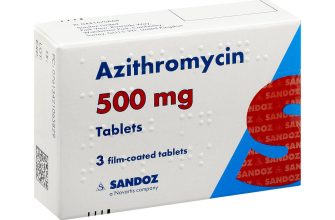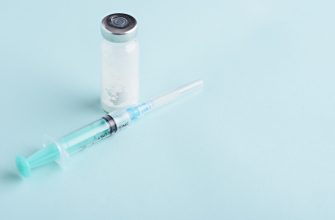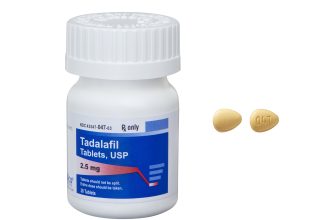Prednisone isn’t a first-line treatment for low platelets (thrombocytopenia), but it can be helpful in specific situations. Doctors often prescribe it when the low platelet count is caused by an autoimmune condition, such as immune thrombocytopenic purpura (ITP).
This medication works by suppressing the immune system, reducing the destruction of platelets. Expect your doctor to monitor your platelet count closely during treatment, typically with blood tests every few weeks. They’ll adjust the dosage based on your response and potential side effects.
Important Note: Prednisone carries side effects, including increased blood sugar, weight gain, and fluid retention. Open communication with your doctor is crucial. Discuss any concerns and report any new symptoms immediately. They might suggest strategies to manage side effects and ensure your overall health during treatment.
Remember: This information is for educational purposes only and doesn’t replace professional medical advice. Always consult your doctor before starting or stopping any medication, including Prednisone. They can properly assess your condition and determine the best course of treatment.
- Prednisone for Low Platelets: A Detailed Guide
- How Prednisone Works
- Potential Side Effects and Considerations
- Understanding Thrombocytopenia and its Causes
- Prednisone’s Role in Treating Low Platelets
- Potential Side Effects and Risks of Prednisone Use
- Alternative Treatments and Long-Term Management of Low Platelets
- Addressing Underlying Conditions
- Lifestyle Modifications and Supportive Care
- Long-Term Monitoring
Prednisone for Low Platelets: A Detailed Guide
Prednisone can sometimes help increase platelet counts, but it’s not a cure-all and its use requires careful medical supervision. It’s primarily used for treating low platelet counts caused by autoimmune disorders like immune thrombocytopenic purpura (ITP).
How Prednisone Works
Prednisone, a corticosteroid, suppresses the immune system. In ITP, the body mistakenly attacks and destroys platelets. Prednisone reduces this immune response, allowing platelet production to increase.
- Mechanism of Action: Prednisone’s anti-inflammatory properties reduce the destruction of platelets.
- Dosage: The prescribed dose varies greatly depending on the severity of thrombocytopenia and individual response. Your doctor will determine the appropriate dosage and duration.
- Administration: Prednisone is typically administered orally.
Potential Side Effects and Considerations
While Prednisone can be beneficial, it’s crucial to be aware of possible side effects. These can include, but aren’t limited to:
- Weight gain
- Increased blood sugar
- Mood changes
- Increased risk of infection
- Fluid retention
- High blood pressure
Your physician will monitor you closely for these and other potential adverse effects. Open communication with your doctor about any concerns is paramount. Regular blood tests will track platelet counts and overall health.
Prednisone is not suitable for all individuals with low platelets. Underlying conditions and other medications must be considered before starting treatment. This medication is a powerful immunosuppressant, and long-term use may carry significant risks.
Always follow your doctor’s instructions precisely regarding dosage and duration of treatment. Never adjust your medication without consulting your healthcare provider.
Understanding Thrombocytopenia and its Causes
Thrombocytopenia signifies a low platelet count, hindering blood clot formation. A normal platelet count ranges from 150,000 to 450,000 per microliter of blood. Counts below 150,000 indicate thrombocytopenia, potentially leading to excessive bleeding.
Causes are diverse. Many conditions disrupt platelet production in the bone marrow. These include aplastic anemia, a condition where the bone marrow doesn’t produce enough blood cells; certain cancers like leukemia; and some viral infections, such as HIV or hepatitis C. Medications, particularly some antibiotics and anti-seizure drugs, can also contribute.
Increased platelet destruction is another key factor. Autoimmune disorders, where the body attacks its own platelets, frequently cause this. Similarly, certain infections, such as thrombotic thrombocytopenic purpura (TTP) and hemolytic uremic syndrome (HUS), destroy platelets faster than they’re produced. Some medications also accelerate platelet breakdown.
Splenomegaly, an enlarged spleen, traps and destroys platelets, thus reducing circulating numbers. This occurs in conditions such as cirrhosis and portal hypertension.
Inherited disorders also play a role. Rare genetic conditions affect platelet production or function, resulting in thrombocytopenia from birth.
Diagnosis typically involves a complete blood count (CBC) to assess platelet levels. Further testing, like bone marrow biopsy or tests for autoimmune diseases, often helps pinpoint the underlying cause.
Treatment depends on the cause and severity. Prednisone, a corticosteroid, is sometimes used to suppress the immune system in cases of autoimmune thrombocytopenia, allowing the body to produce more platelets. Other treatments might include removing the spleen, addressing underlying conditions, or administering medications to stimulate platelet production. Accurate diagnosis guides effective treatment.
Prednisone’s Role in Treating Low Platelets
Prednisone, a corticosteroid, sometimes helps increase platelet counts. It works by suppressing the immune system, which can be attacking platelets in certain conditions like immune thrombocytopenic purpura (ITP).
Doctors prescribe Prednisone for ITP to reduce the destruction of platelets. The dosage and duration vary greatly depending on individual needs and response to treatment. Typical treatment involves daily oral doses for several weeks, often tapering the dose gradually to minimize side effects.
While Prednisone can be beneficial, it’s not a cure for low platelets and carries potential side effects, including weight gain, increased blood sugar, and increased risk of infection. Therefore, close monitoring by a healthcare professional is crucial throughout treatment.
Prednisone isn’t effective for all causes of low platelets. Its use is specific to cases where an overactive immune system is responsible for platelet destruction. Your doctor will conduct tests to determine the underlying cause of your low platelets before deciding on a treatment plan.
Always discuss the risks and benefits of Prednisone with your doctor. They’ll help determine if it’s the right treatment for you and adjust the dosage based on your progress. Remember, self-medicating is dangerous; always follow your doctor’s instructions precisely.
Potential Side Effects and Risks of Prednisone Use
Prednisone, while helpful in raising platelet counts, carries potential side effects. These vary depending on dosage and duration of treatment. Common side effects include increased appetite and weight gain, mood swings, insomnia, and increased blood sugar levels. You might also experience fluid retention, leading to swelling in your face, legs, or ankles.
More serious, though less common, side effects include increased risk of infections due to weakened immunity, high blood pressure, and increased risk of blood clots. Osteoporosis, a weakening of bones, is a long-term risk with prolonged prednisone use. Gastrointestinal problems like heartburn, nausea, and ulcers can also occur. Rare but severe side effects include pancreatitis and cataracts.
Regular monitoring of blood pressure, blood sugar, and bone density is vital. Your doctor will likely recommend regular check-ups to watch for these potential problems. Open communication with your doctor about any new or worsening symptoms is crucial. They can adjust your dosage or treatment plan as needed to minimize risks.
Remember to discuss all medications you take, including over-the-counter drugs and supplements, with your doctor before starting prednisone. Some interactions can increase the likelihood or severity of side effects. Following your doctor’s instructions carefully is key to managing potential risks and maximizing the benefits of prednisone therapy.
Alternative Treatments and Long-Term Management of Low Platelets
Identifying the underlying cause of your low platelets (thrombocytopenia) is crucial for effective treatment. Your doctor will conduct tests to determine the root problem, which might include infections, autoimmune disorders, medications, or even certain cancers. Addressing the cause directly often resolves the low platelet count.
Addressing Underlying Conditions
For example, if an infection is the cause, treating the infection with antibiotics or antiviral medication will likely increase your platelet count. Autoimmune diseases might require medications like corticosteroids (though Prednisone is one example, others exist), immunosuppressants, or intravenous immunoglobulin (IVIG). If a medication is the culprit, your physician will adjust or discontinue the offending drug. In cases of cancer affecting platelet production, targeted therapies or chemotherapy might be necessary. Regular blood tests will monitor the effectiveness of these treatments.
Lifestyle Modifications and Supportive Care
Maintaining a healthy lifestyle plays a supporting role. A balanced diet rich in iron and folate supports healthy blood cell production. Avoid alcohol and limit your intake of processed foods and saturated fats. Regular exercise and adequate rest help maintain overall health. If your platelet count remains low despite treatment, your doctor might recommend platelet transfusions in case of severe bleeding or planned surgery.
Long-Term Monitoring
Long-term management often involves regular blood tests to track your platelet count and monitor the effectiveness of treatment. Your doctor will adjust the treatment plan as needed, considering your response and overall health. Open communication with your healthcare provider is key to managing your condition successfully.









